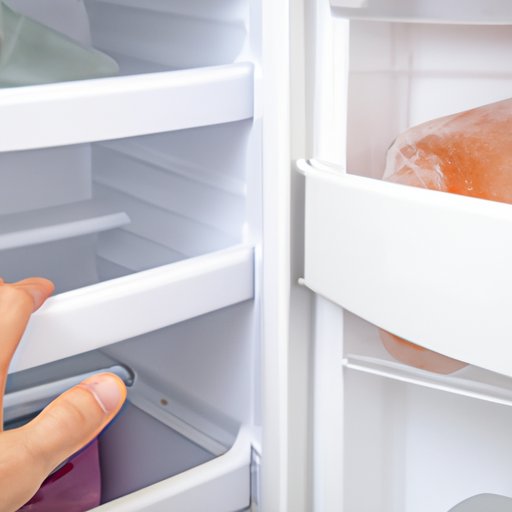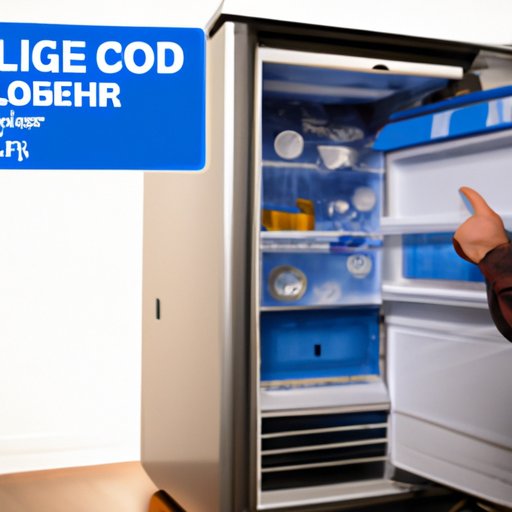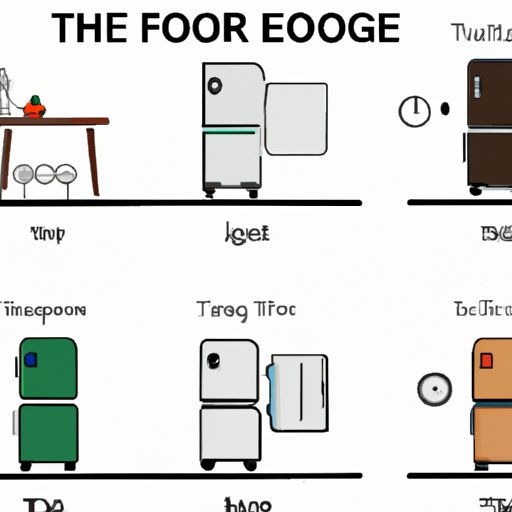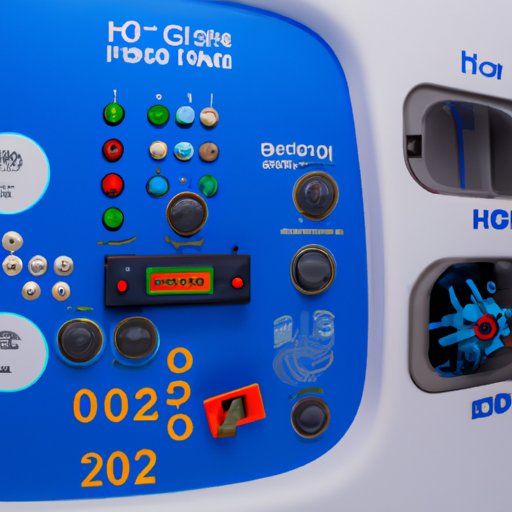Introduction
Refrigerators are an essential appliance in any home, helping to keep food fresh and safe to eat. But when you first install a new fridge or you’re replacing an old one, you may be wondering how long it takes for a refrigerator to get cold. In this article, we explore the factors that impact refrigerator cooling times as well as provide an in-depth look at refrigerator cooling technology. We also provide tips and tricks on how to quickly get your refrigerator cold as well as a guide to setting up your new refrigerator for maximum efficiency.
Analyzing the Factors That Impact Refrigerator Cooling Times
When it comes to refrigerator cooling times, there are several factors that can impact how quickly your unit reaches the desired temperature. Let’s take a closer look at each of these factors.
Temperature Settings
The temperature setting of your refrigerator will have a direct impact on how quickly it cools. The colder the temperature is set, the longer it will take for the refrigerator to reach the desired temperature. Generally speaking, it’s recommended to set your refrigerator to between 35°F and 38°F.
Size and Capacity
The size and capacity of your refrigerator will also play a role in the cooling time. Larger refrigerators with more capacity will take longer to cool than smaller models with less capacity. This is because they require more energy to reach the desired temperature.
Location
Where you place your refrigerator will also have an impact on its cooling time. If your refrigerator is located in a warm area, such as near an oven or dishwasher, it will take longer to cool than if it were located in a cooler area. It’s best to place your refrigerator away from heat sources to ensure optimal cooling.
Thermostat
The thermostat in your refrigerator is responsible for regulating the temperature. If your thermostat isn’t working properly, it could take longer for your refrigerator to cool. Be sure to check the thermostat periodically to make sure it’s functioning properly.
An In-Depth Look at Refrigerator Cooling Technology
To understand how long it takes for a refrigerator to get cold, it’s important to have a basic understanding of how refrigerator cooling technology works. A typical refrigerator consists of four main components: the compressor, condenser, evaporator, and expansion valve.
Compressor
The compressor is the heart of the refrigerator’s cooling system. It pumps refrigerant through the system and helps to maintain the desired temperature. When the temperature inside the refrigerator rises, the compressor kicks in and starts compressing the refrigerant to lower the temperature.
Condenser
The condenser is responsible for releasing heat from the refrigerant. As the refrigerant passes through the condenser, heat is released into the air outside the refrigerator. This helps to maintain the desired temperature inside the refrigerator.
Evaporator
The evaporator is responsible for absorbing heat from the air inside the refrigerator. As the refrigerant passes through the evaporator, it absorbs heat from the air, which helps to cool the interior of the refrigerator.
Expansion Valve
The expansion valve is responsible for controlling the flow of refrigerant throughout the system. As the refrigerant passes through the expansion valve, it expands, which helps to maintain the desired temperature inside the refrigerator.

How to Quickly Get Your Refrigerator Cold
If you’re in a hurry to get your refrigerator cold, there are a few simple steps you can take to speed up the process. Here are some tips and tricks for quickly getting your refrigerator cold:
Pre-Chill the Unit
Before turning on your refrigerator, pre-chill the unit by placing a few containers of ice in the freezer compartment. This will help to speed up the cooling process.
Set the Temperature to Its Coldest Setting
Setting the temperature of your refrigerator to its coldest setting will help to speed up the cooling process. However, it’s important to note that setting the temperature too low can cause food to freeze, so be sure to adjust the temperature accordingly.
Keep the Door Closed
It’s important to keep the door of your refrigerator closed as much as possible to maintain the desired temperature. Every time the door is opened, cold air escapes and warm air enters, which can slow down the cooling process.

A Guide to Setting Up Your New Refrigerator for Maximum Cooling Efficiency
In order to achieve maximum cooling efficiency with your refrigerator, it’s important to take the time to set it up correctly. Here are some tips for setting up your new refrigerator:
Positioning
Be sure to position your refrigerator away from heat sources, such as ovens, dishwashers, and windows. This will help to ensure optimal cooling efficiency.
Sealing Gaps Around the Door
Check the seal around the door of your refrigerator to make sure it’s tight and secure. If there are any gaps, use weatherstripping or caulk to seal them. This will help to keep cold air in and warm air out.
Checking the Temperature Settings
Make sure to check the temperature settings on your refrigerator to ensure they are set correctly. The ideal temperature range is between 35°F and 38°F.
Exploring Common Problems That Can Slow Down Refrigerator Cooling
While there are many factors that can affect refrigerator cooling times, there are also some common problems that can slow down the process. Here are some of the most common problems that can slow down refrigerator cooling:
Dirty Coils
Dirty coils can cause the refrigerator to run inefficiently and take longer to cool. Be sure to clean the coils periodically to ensure optimal cooling efficiency.
Malfunctioning Defrost System
If your refrigerator’s defrost system isn’t working properly, it can cause the refrigerator to take longer to cool. Be sure to check the defrost system periodically to make sure it’s functioning properly.
Leaky or Inadequate Insulation
If your refrigerator has leaky or inadequate insulation, it can cause the unit to take longer to cool. Be sure to check the insulation periodically to ensure it’s in good condition.

Comparing Different Types of Refrigerators and Their Cooling Times
Different types of refrigerators have different cooling times. Here is a quick comparison of the average cooling times for the most common types of refrigerators:
Top Freezer Refrigerators
Top freezer refrigerators typically take around 24 hours to reach their optimal temperature.
Side by Side Refrigerators
Side by side refrigerators typically take around 48 hours to reach their optimal temperature.
French Door Refrigerators
French door refrigerators typically take around 72 hours to reach their optimal temperature.
Bottom Freezer Refrigerators
Bottom freezer refrigerators typically take around 96 hours to reach their optimal temperature.
Conclusion
In conclusion, it can take anywhere from 24 to 96 hours for a refrigerator to get cold, depending on the type of refrigerator and the factors discussed in this article. To ensure your refrigerator cools quickly and efficiently, be sure to take the time to set it up correctly. Additionally, keep an eye out for common problems that can slow down refrigerator cooling, such as dirty coils, malfunctioning defrost systems, and leaky or inadequate insulation.
By following the tips and tricks outlined in this article, you can ensure your refrigerator cools quickly and efficiently. With the right setup and maintenance, you can enjoy fresh and safe food for years to come.
(Note: Is this article not meeting your expectations? Do you have knowledge or insights to share? Unlock new opportunities and expand your reach by joining our authors team. Click Registration to join us and share your expertise with our readers.)
